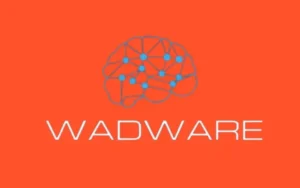Sifangds: What You Need to Know

What Are Sifangds?
Sifangds are an innovative technology that’s gaining attention for their potential to revolutionize various industries. To grasp the concept, it’s helpful to think of them as specialized tools or systems that offer advanced functionalities. Unlike traditional systems, Sifangds are designed to integrate seamlessly with existing technologies, providing enhanced performance and capabilities.
Why Are Sifangds Important?
Sifangds are important for several reasons:
- Enhanced Efficiency: They can significantly improve the efficiency of processes in various fields. Whether it’s in data management, manufacturing, or software development, Sifangds optimize workflows and reduce the time needed to complete tasks.
- Cost Savings: By streamlining operations and automating repetitive tasks, Sifangds help businesses save money. This is particularly beneficial for companies looking to minimize operational expenses while maintaining high performance.
- Improved Accuracy: With advanced algorithms and real-time processing, Sifangds reduce the likelihood of human error. This leads to more accurate results and reliable data analysis.
- Scalability: As businesses grow, their needs change. Sifangds are designed to scale, making it easier for companies to adapt to new requirements without overhauling their entire system.
Who Can Benefit from Sifangds?
Sifangds are beneficial to a wide range of users:
- Businesses: Companies across different sectors can leverage Sifangds to enhance their operations. From small startups to large corporations, businesses can use these systems to gain a competitive edge.
- Developers: Software developers and IT professionals find Sifangds useful for integrating new technologies into their projects. The flexibility and advanced features of Sifangds make them a valuable tool for creating cutting-edge applications.
- Researchers: In fields like data science and engineering, researchers can utilize Sifangds to analyze complex data sets and develop new theories or solutions.
- Manufacturers: In manufacturing, Sifangds can improve production efficiency and quality control, leading to better products and reduced costs.
What Are the Key Features of Sifangds?
Sifangds come with several notable features:
- Advanced Algorithms: They utilize sophisticated algorithms to process and analyze data more efficiently than traditional methods. Here is more 10 Ways to Get the Most Out of Bugdig
- Real-Time Processing: Sifangds are capable of processing data in real time, which is crucial for applications that require immediate feedback or adjustments.
- Integration Capabilities: These systems are designed to integrate smoothly with existing technologies, making it easier to upgrade or enhance current setups.
- User-Friendly Interfaces: Despite their advanced capabilities, Sifangds often feature intuitive interfaces that make them accessible to users with varying levels of technical expertise.
- Customizability: Many Sifangds offer customization options to fit specific needs or preferences, allowing users to tailor the system to their unique requirements.
How Do Sifangds Work?
Sifangds work by leveraging a combination of advanced software and hardware components. The general process involves:
- Data Collection: They gather data from various sources, which could include sensors, user inputs, or external databases.
- Data Processing: Using powerful algorithms, Sifangds process the collected data to extract valuable insights or perform necessary tasks.
- Integration: The processed data is then integrated with other systems or used to drive specific actions, depending on the application’s needs.
- Output: Finally, the results are delivered in a user-friendly format, which could be reports, visualizations, or direct actions within a system.
Does Implementing Sifangds Require Special Training?
Implementing Sifangds may require some training, especially if the system is complex or highly specialized. However, many Sifangds come with comprehensive documentation and support resources to assist users. Additionally, the user-friendly design of many Sifangds helps minimize the learning curve.
Training may involve:
- Understanding System Functions: Users need to become familiar with the specific functions and capabilities of the Sifangd they are using.
- Integration Procedures: Learning how to integrate Sifangds with existing systems can be crucial for a smooth implementation.
- Troubleshooting: Knowing how to address common issues or seek help when needed is important for maintaining system performance.
What Are the Challenges of Using Sifangds?
While Sifangds offer many benefits, there are some challenges to consider:
- Initial Cost: The upfront investment for Sifangds can be significant. However, the long-term benefits often outweigh these costs.
- Integration Complexity: Depending on the existing systems, integrating Sifangds may be complex and require careful planning.
- Ongoing Maintenance: Like any advanced technology, Sifangds require regular maintenance and updates to ensure they continue to operate effectively.
- Data Security: Ensuring the security of data processed by Sifangds is crucial. Implementing robust security measures is necessary to protect sensitive information.
Conclusion
Sifangds represent a significant advancement in technology, offering enhanced efficiency, cost savings, and improved accuracy across various fields. While there are challenges associated with their implementation, the benefits often make them a worthwhile investment. Businesses, developers, researchers, and manufacturers can all find value in incorporating Sifangds into their operations. With their advanced features and real-time processing capabilities, Sifangds are poised to play a crucial role in the future of technology.








